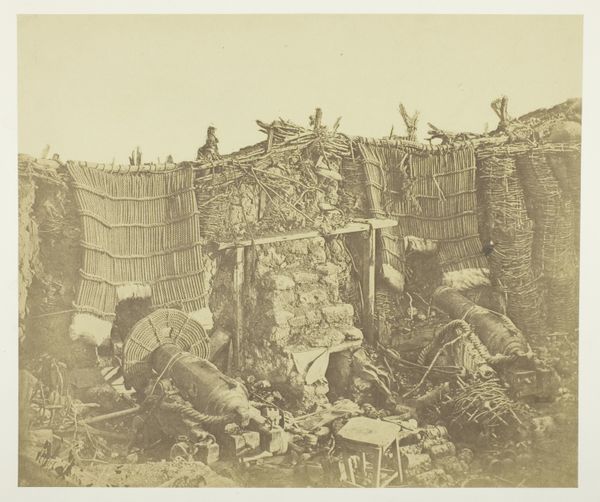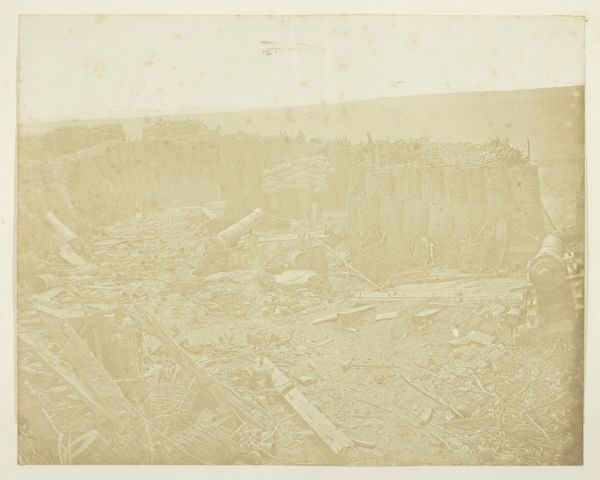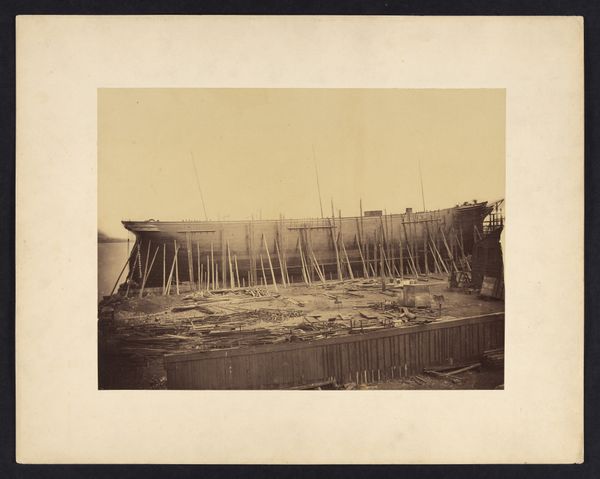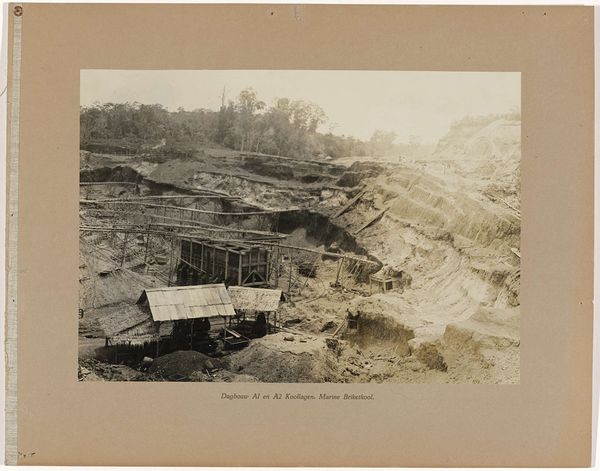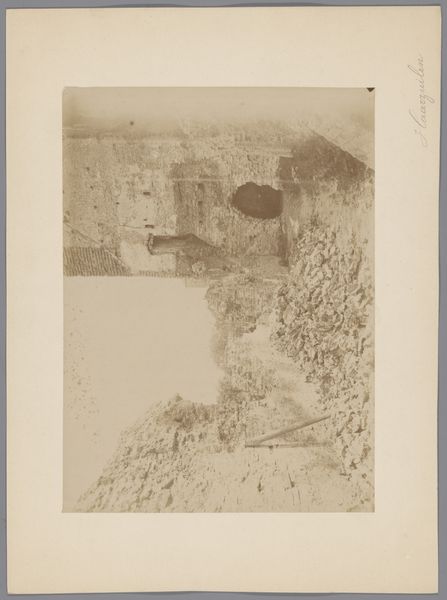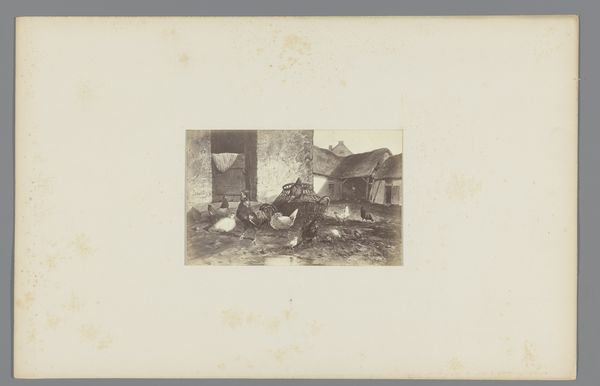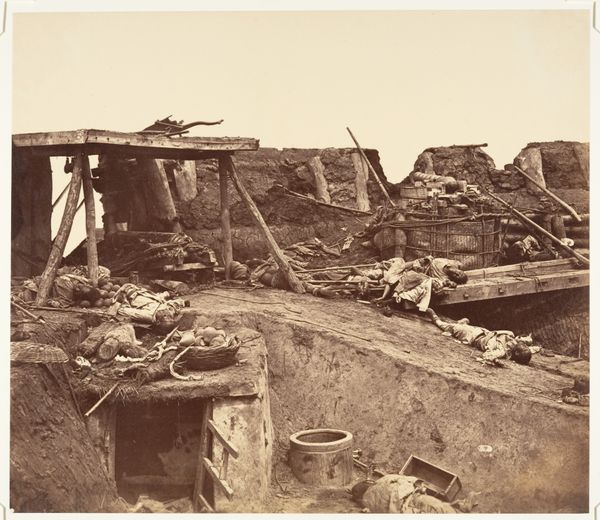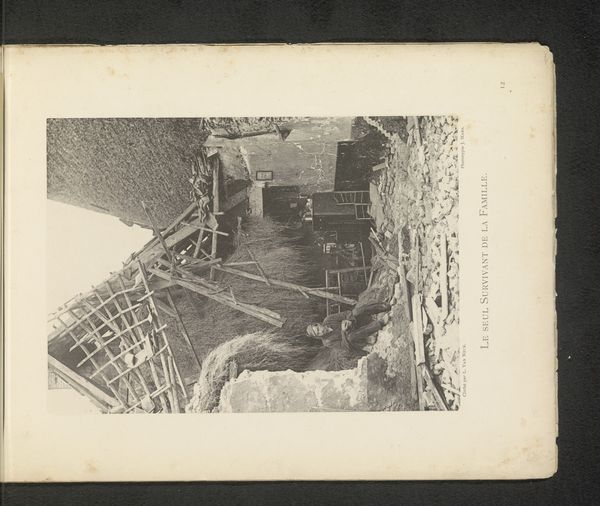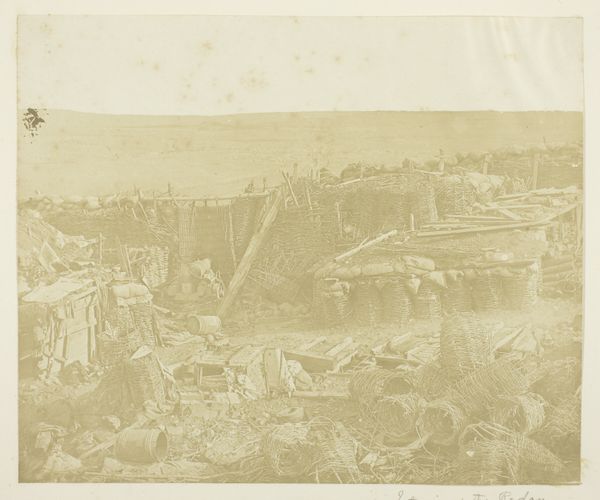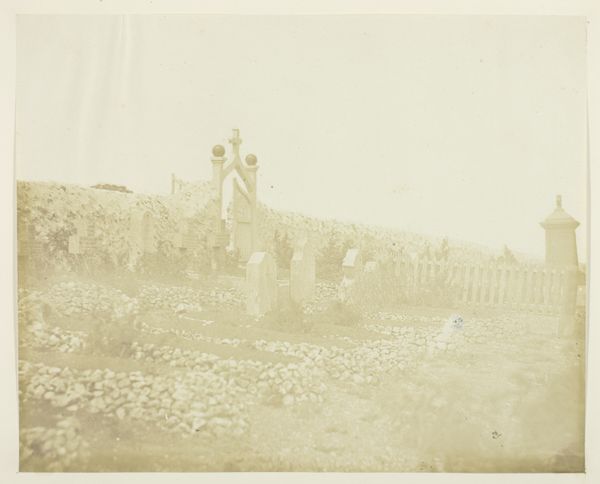
photography
#
16_19th-century
#
landscape
#
photography
#
watercolour illustration
Dimensions: 24.3 × 30.5 cm (image/paper); 30.6 × 40.5 cm (mount/page)
Copyright: Public Domain
Curator: James Robertson's 1855 photograph, "Russian Barrack Battery," shows a fortified position, likely during the Crimean War. It's currently housed at The Art Institute of Chicago. What are your immediate impressions? Editor: An almost ethereal quality... it’s faded, yes, but evokes a dreamlike space – stark, desolate, a touch unnerving with that ghostly paleness. The texture seems almost woven together, all crumbling matter. Curator: Absolutely. Robertson was a pioneer. Think about the technical challenges! Photography was still a relatively new medium, particularly in documenting conflict. This isn’t staged propaganda; it aims, somewhat, to capture the stark realities of war, even if subtly. Editor: And that subtlety is key, isn’t it? It avoids glorification; instead, the muted tones, the visible wear and tear… there's a palpable sense of exhaustion and decay within the landscape itself. Curator: The composition directs your eye to the rough textures of the defenses, built from what's available—earth, wicker. This reveals the ingenuity and limitations of makeshift structures in the war zones. They embody a history of colonial conflict and geopolitical struggle. Editor: Looking at it this way, it almost makes these defensive walls feel human. Improvised, fragile. How might it shape viewers' perception of military endeavors and warfare? Is this something raw, honest that maybe history book images couldn’t convey as viscerally? Curator: Possibly. In an era saturated with idealized portraits of military leaders and grand battle scenes, Robertson's photograph offers an important alternative perspective. It humanizes, almost. The focus on the rudimentary barricades strips away the layers of pomp, leaving us face-to-face with a certain bareness and lack. Editor: Perhaps Robertson unwittingly stumbled onto a kind of anti-monument. Here’s a candid image, stark, less posed - making even this “Russian Barrack Battery” timeless in its quiet desperation. It lets viewers fill in narrative rather than prescribe one. Curator: Indeed. This photograph remains an interesting window into the realities faced in that period and its early understanding and use of the photographic medium. Editor: Agreed. "Russian Barrack Battery" gives pause for reflection. A fragile document indeed.
Comments
No comments
Be the first to comment and join the conversation on the ultimate creative platform.
